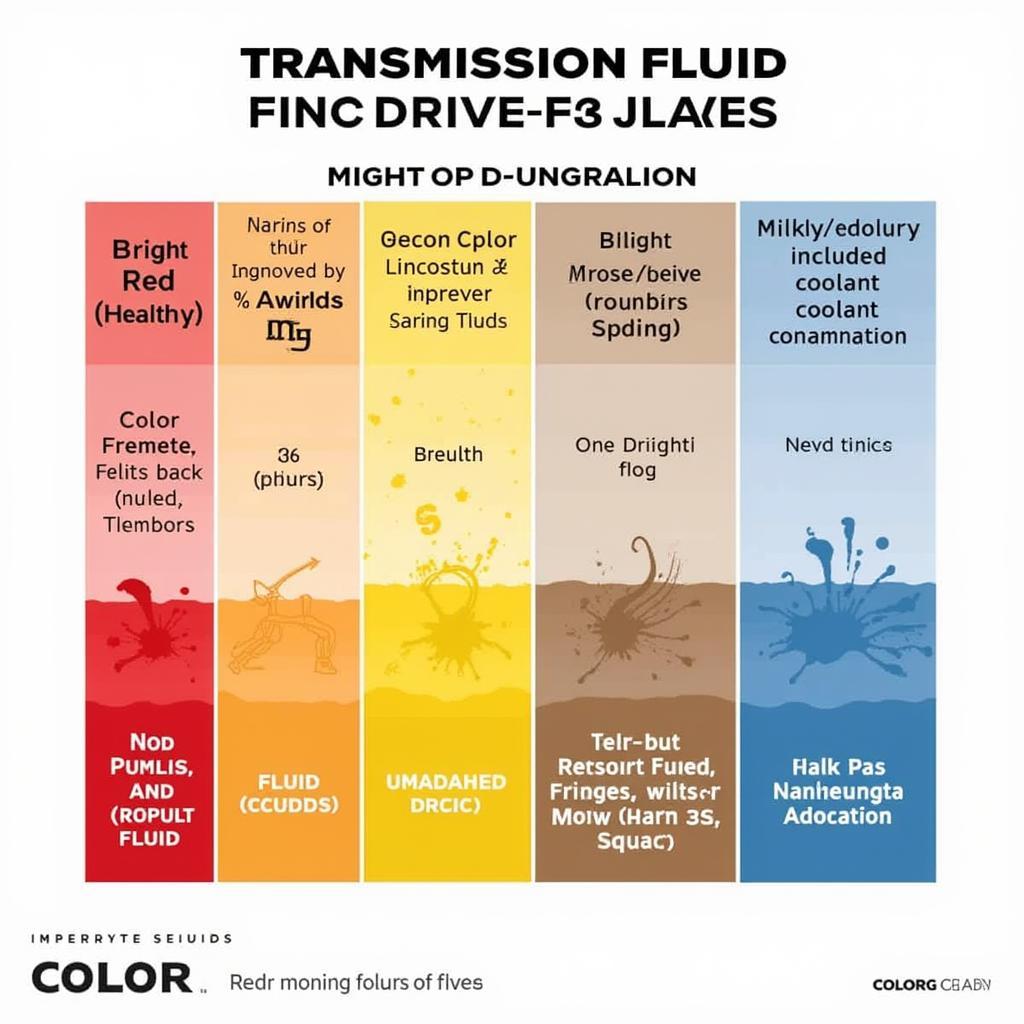Transmission fluid is the lifeblood of your vehicle’s transmission system. It lubricates moving parts, cools the transmission, and transmits power. Knowing what color your transmission fluid should be and how to check it is crucial for maintaining your car’s health and preventing costly repairs. The color of healthy transmission fluid can tell you a lot about the condition of your transmission. If the fluid is the wrong color, it’s a sign that something might be wrong.
Knowing what color is automatic transmission fluid is essential for early problem detection. Healthy fluid is typically bright red, translucent, and has a slightly sweet smell. Any deviation from this could indicate issues ranging from minor leaks to severe internal damage. Regular checks can save you from expensive repairs down the line.
Understanding Transmission Fluid Color
The ideal color for transmission fluid is a vibrant, translucent red. This indicates fresh fluid that’s effectively performing its job. However, over time and with use, the fluid can change color and consistency. Being able to recognize these changes is key to identifying potential problems.
Why is the Color of Transmission Fluid Important?
The color of your transmission fluid provides a visual indicator of its condition. Changes in color often signify the presence of contaminants, wear and tear, or overheating. By regularly checking your fluid’s color, you can catch potential issues early and prevent them from escalating into major problems.
What does brown transmission fluid indicate? Brown or dark-colored fluid is a warning sign. It can suggest that the fluid is old, burnt, or contaminated with debris from the transmission. This can lead to reduced lubrication, overheating, and ultimately, transmission failure.
What if my transmission fluid is milky? A milky or cloudy appearance can suggest the presence of coolant in the transmission fluid, a sign of a potentially serious problem like a cracked transmission cooler or a blown head gasket.
 Transmission Fluid Color Chart
Transmission Fluid Color Chart
How to Check Your Transmission Fluid
Checking your transmission fluid is a straightforward process that you can perform at home. Remember to consult your owner’s manual for specific instructions for your vehicle model. Generally, the process involves:
- Warming up the engine: A warm engine allows the fluid to circulate and gives you a more accurate reading.
- Locating the dipstick: The transmission dipstick is usually located near the engine, often with a red handle.
- Checking the fluid level and color: Remove the dipstick, wipe it clean, reinsert it, and remove it again to check the fluid level and color.
Interpreting Your Findings
Once you have checked the fluid, compare its color to the ideal bright red. If the fluid is dark, brown, or has a burnt smell, it’s time for a fluid change. If you notice any unusual colors or textures, like milky or cloudy fluid, it’s best to consult a mechanic immediately.
Maintaining Your Transmission
Regular maintenance is key to extending the life of your transmission. This includes regular fluid changes as recommended by your vehicle manufacturer. Using the correct type of fluid for your vehicle is also essential for optimal performance.
What happens if I use the wrong transmission fluid? Using the wrong type of fluid can cause damage to your transmission. Consult your owner’s manual for the recommended fluid type.
what color is atf is another common query, with ATF standing for Automatic Transmission Fluid. It should ideally be a vibrant red.
Conclusion
Understanding what color should transmission fluid be is an important part of car maintenance. Regularly checking the fluid’s color and level can help you identify potential problems early on and prevent costly repairs. Remember, bright red and translucent is the ideal color. Any deviation from this should be investigated.
FAQ
- How often should I check my transmission fluid?
- What does burnt transmission fluid smell like?
- Can I top off my transmission fluid myself?
- How much does a transmission fluid change cost?
- What are the signs of a failing transmission?
- What is the difference between automatic transmission fluid and gear oil? what color is gear oil
- What causes transmission fluid to turn brown?
Common Scenarios
- Scenario 1: You notice your transmission fluid is brown. This likely indicates the fluid is old and needs changing.
- Scenario 2: Your transmission fluid is milky. This could mean coolant is leaking into the transmission, requiring immediate professional attention.
- Scenario 3: You smell a burning odor from your transmission. This is a serious sign and needs to be addressed by a mechanic right away.
Related Articles and Questions
Need further assistance? Contact us at Phone Number: 0373298888, Email: [email protected], or visit our address: 86 Cầu Giấy, Hà Nội. We have a 24/7 customer support team.

